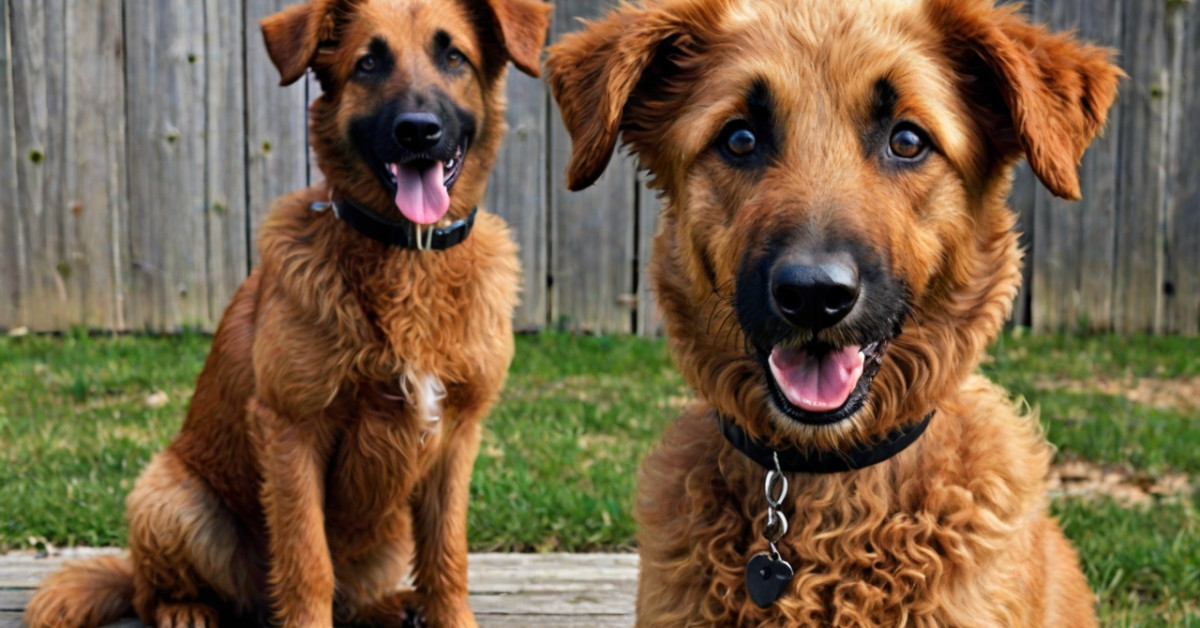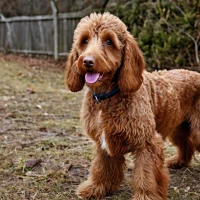Have you ever heard of the Belgian Doodle? If not, you’re in for a treat! 🚀 These delightful pups are a cross between a Belgian Malinois and a Poodle. They’re not just cute; they come with an interesting mix of personality and remarkable traits. Let me walk you through everything you need to know about these furry friends.
A Personal Encounter
A while back, my friend Anna introduced me to her new pup, Max. When she mentioned he was a Belgian Doodle, I was admittedly puzzled. Belgian Doodle? I thought she might have made it up! But as soon as Max trotted into the room, his unique look and sprightly demeanor captivated me. Anna started sharing Max’s quirks and traits, and I was instantly fascinated.
The Origins of the Belgian Doodle
Before diving deep, let’s get some background. The Belgian Doodle hails from crossing the intelligent Belgian Malinois with the highly trainable Poodle. The Belgian Malinois is often seen in working roles like police or guard dogs, while Poodles are known for their hypoallergenic coats and smartness.
Combining the two gives you a dog that’s not only sharp but also hypoallergenic—perfect for those with allergies.
Physical Traits and Appearance
Belgian Doodles can vary quite a bit in appearance. Generally, they inherit the curly or wavy coat from their Poodle parent, which can be anything from short to medium length. The coat colors range from black, brown, grey, and even a beautiful mix of all three!
One thing’s for sure - they have the soulful eyes of the Malinois and the elegant stance of a Poodle. Plus, their coats are often low-shedding, making them a great option for neat freaks or those with allergies.
Personality and Temperament 🐾
Ah, the personality of a Belgian Doodle! Imagine a dog that’s alert and diligent, with a playful, affectionate side. That’s exactly what you get with this mix. These dogs are usually very loyal and become quickly attached to their families.
But, and it’s a big but, they do need mental stimulation. Without it, they can get bored and could develop behavioral issues. I once heard someone say, “A bored Belgian Doodle is a destructive Doodle.”
Training and Mental Stimulation
Because both parent breeds are intelligent, Belgian Doodles crave mental challenges. They’re the kind of dogs that can learn tricks quickly and love to participate in agility or obedience training. Once, I saw Max perform a seamless series of agility tasks, and trust me, his performance was better than some professional athletes!
Of course, consistency is key. These dogs respond best to positive reinforcement. A simple “Good boy!” can go a long way.
Exercise Requirements
Remember the friend I mentioned earlier? Anna? Well, she takes Max out for a run every morning because Belgian Doodles have high energy levels. They’re not couch potatoes. If you’re considering adding one to your family, be prepared for plenty of walks, runs, or even hikes. An idle Belgian Doodle? Not a good idea.
Grooming Needs
Given their Poodle ancestry, Belgian Doodles benefit from regular grooming. Their curly, hypoallergenic coats need regular brushing to avoid mats. Bath them every month or so and keep a close eye on their nails.
I have to admit, watching Anna brush Max can be quite the spectacle. He likes to play with the brush! 🪥
Health Concerns
Although generally healthy, Belgian Doodles can inherit issues from either parent. Hip dysplasia, eye conditions, and allergies are worth monitoring. Regular vet visits, a balanced diet, and exercise can mitigate these issues.
Did you know that Poodles are known for their longevity? Mixing them with Malinois can potentially give you a partner that sticks around for 12-15 years.
Are They Good with Kids and Other Pets?
Absolutely, but with a catch. Socializing them early is important. Max once had a not-so-friendly encounter with a neighborhood cat, but after some socialization classes, he gets along just fine with both feline and canine buddies.
Feeding Your Belgian Doodle
Balanced nutrition is crucial. Invest in high-quality dog food that meets your pet’s needs. Due to their activity levels, a diet rich in protein and essential fatty acids works wonders.
Belgian Doodle in Apartments
I’ve been asked several times if a Belgian Doodle can live in an apartment. Short answer – yes, but provided they get sufficient exercise. They’re adaptable but need to burn off that energy!
Expert Tips on Caring for Your Belgian Doodle
Oh, the stories I could tell! Here are some golden nuggets:
- Regular Vet Check-ups: Early detection can save you and your furry friend a lot of heartache.
- Crate Training: Helps in housebreaking and provides a safe haven for your dog.
- Interactive Toys: These will keep them mentally stimulated.
- Obedience Classes: Great for socialization and training.
Reflecting on My Experience
Overall, having spent time with Max and other Belgian Doodles, I’ve developed a deep appreciation for this wonderful mix. Their intelligence, loyalty, and boundless energy make them excellent pets for active families.
In closing, thank you for reading about the fabulous Belgian Doodle. If you’re considering adding one to your family, you’re in for a delightful journey. Remember - every pet deserves love, care, and lots of fun times! 🐕✨
Woof out! 🌟










